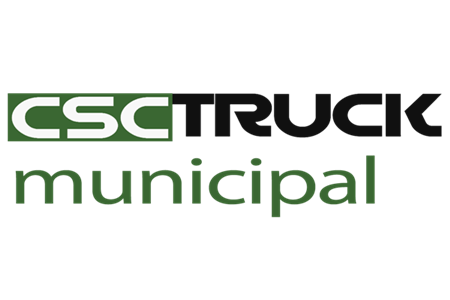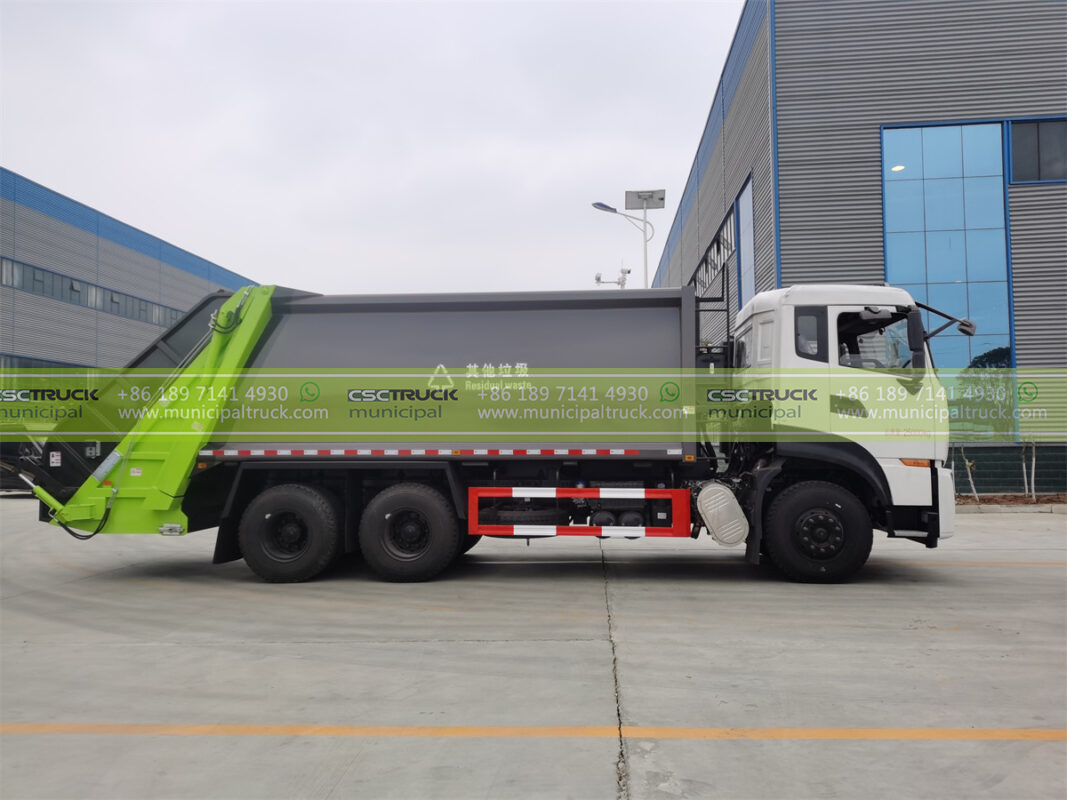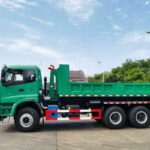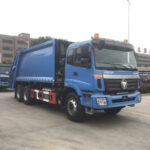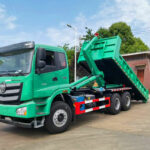In the intricate web of modern waste management, compactor garbage trucks stand out as indispensable tools for optimizing efficiency, reducing costs, and meeting environmental goals. These vehicles, equipped with hydraulic systems that compress waste into dense bundles, address unique challenges across diverse environments. While alternatives like hook loader garbage trucks and Rear loader trucks serve specific roles, compactor trucks excel in scenarios where space, volume, and regulatory compliance are paramount. This article explores seven critical settings where compactor garbage trucks are not just beneficial but essential.
1. High-Density Urban Centers
Megacities like New York, Tokyo, and Mumbai generate staggering amounts of waste daily—often exceeding 10,000 metric tons in major metropolitan areas. Compactor garbage trucks thrive here by:
- Reducing collection frequency: Compression increases payload capacity by up to 300%, minimizing trips to distant landfills.
- Navigating tight spaces: Compacted waste allows smaller storage footprints, crucial in cities where alleyways and curbside space are limited.
- Mitigating odor and pests: Densely packed waste delays decomposition, lowering health risks in crowded neighborhoods.
In cities like Singapore, where landfill space is virtually nonexistent, compactors are legally mandated to extend the lifespan of offshore disposal sites like Pulau Semakau.
2. Commercial and Industrial Zones
Warehouses, manufacturing plants, and shopping districts produce heavy, non-uniform waste streams—plastic pallets, packaging materials, and rejected goods. Standard Rear loader trucks struggle with such volumes, but compactor garbage trucks offer:
- Bulk handling: Force-compressing lightweight materials like Styrofoam or cardboard into manageable blocks.
- Hazardous material containment: Sealed compaction chambers prevent chemical or biological leaks during transit.
- Cost efficiency: A single compactor truck can replace three traditional trucks in processing retail waste, slashing fuel and labor costs by 40%.
For example, Amazon’s distribution centers deploy compactors to handle over 1,000 tons of packaging waste monthly, aligning with corporate sustainability targets.
3. Residential Communities with Space Constraints
Suburban neighborhoods and apartment complexes face dual challenges: limited curbside space and rising waste generation (up 18% since 2020). Compactor garbage trucks address these issues by:
- Extending bin capacity: Compacting household waste onsite reduces overflow between pickups.
- Noise reduction: Modern electric compactors operate at 70 dB—quieter than traditional trash trucks, minimizing disturbances.
- Aesthetic preservation: Flattened waste eliminates protruding debris that attracts animals or causes litter.
In cities like San Francisco, where yard space is scarce, compactors have reduced illegal dumping incidents by 22% since 2019.
4. Event Venues and Public Gatherings
Music festivals, sports stadiums, and convention centers generate 10–15 times more waste daily than typical urban areas. Compactor garbage trucks deployed here:
- Prevent logistical chaos: Rapid compaction during events avoids overflowing bins and safety hazards.
- Support recycling initiatives: Separate compartments for compacting cans, glass, and organic waste streamline post-event sorting.
- Enable quick cleanup: Coachella’s 2023 festival used compactors to clear 450 tons of waste in under 48 hours—a task impossible with standard trucks.
5. Remote and Rural Areas
Rural regions often lack frequent collection schedules due to distance and budget constraints. Compactor garbage trucks mitigate these challenges by:
- Maximizing hauling efficiency: Compressed waste reduces fuel costs for long trips to landfills.
- Weatherproofing waste: Densified loads are less prone to scattering in high winds or rain.
- Supporting infrequent pickups: Alaska’s remote villages use compactors to store waste safely for monthly collections.
6. Disaster Response Zones
Post-hurricane or earthquake debris—sodden drywall, splintered wood, and mud-soaked furniture—is often too voluminous for conventional trucks. Compactor garbage trucks excel in disasters by:
- Accelerating recovery: One truck can process 8 tons of flood debris per hour, versus 3 tons for non-compactors.
- Reducing biohazards: Compression seals mold-prone materials, protecting recovery crews.
- Meeting FEMA standards: Post-Katrina, compactors became mandatory in federal disaster contracts for their efficiency.
7. Regions with Strict Environmental Regulations
The EU’s Landfill Directive and California’s SB 1383 mandate waste reduction targets (50% by 2030). Compactor garbage trucks help municipalities comply by:
- Lowering landfill reliance: Compacted waste occupies 67% less space, delaying landfill saturation.
- Enabling waste-to-energy: Uniformly compressed trash burns cleaner in incinerators, meeting emissions caps.
- Documenting compliance: Onboard scales and RFID tags track compacted weights for regulatory reporting.
While hook-loader garbage trucks remain ideal for industrial container swaps and rear-loader trucks excel in manual residential collection, compactor garbage trucks fill a unique niche. They transform unwieldy waste into manageable, eco-friendly loads, ensuring cities, businesses, and communities meet the demands of efficiency and sustainability in an increasingly waste-conscious world.
